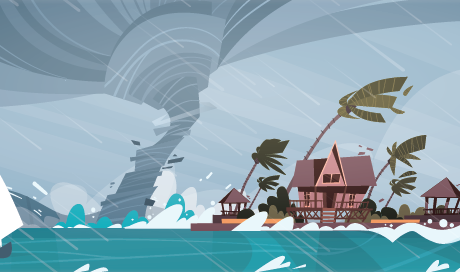What is a hurricane?
A hurricane, like other natural disasters, is something that we all pause to listen to each time we hear of it on the news. This is because we have all seen the devastation that it can bring to people who live in the area. Hurricanes, typhoons and tropical cyclones are the strongest tropical storms. These different names all mean the same thing, but are used in different parts of the world. If these huge storms start in the Atlantic, off the west coast of Africa, they are called hurricanes.
In an average year, over a dozen hurricanes form over the Atlantic Ocean. They may last as long as a month and although they travel very slowly - usually at about 24 km/h (15 mph) - wind speeds can reach over 120 km/h (75 mph). Tropical storms like hurricanes, cyclones or typhoons last a long time and are given names to be identified quickly. There can be 100 storms a year and sailors need to be able to tell them apart. The first storm of a year will have an A name, like Hurricane Alice or Typhoon Andrew, the next one gets a B name and so on. There are regular meetings of weather scientists who decide on new names for the next year. Hurricanes cycle through a list of names alternating between male and female names. However, up until the 1970s, hurricanes were given only female names.
Effects of hurricanes
The intense winds of tropical storms can destroy whole communities, buildings and communication networks. The rise in water causes massive waves to hit the shores near the storm. Over land, hurricanes do a lot of damage, with powerful winds blasting the landscape. Heavy rains from the hurricane’s clouds also cause flooding. Hurricanes are not things that we can do much about in terms of their occurrence. They are natural. However, with modern monitoring systems and technology, we can be warned of impending hurricanes and show some reasonable level of caution to minimize the damage.

